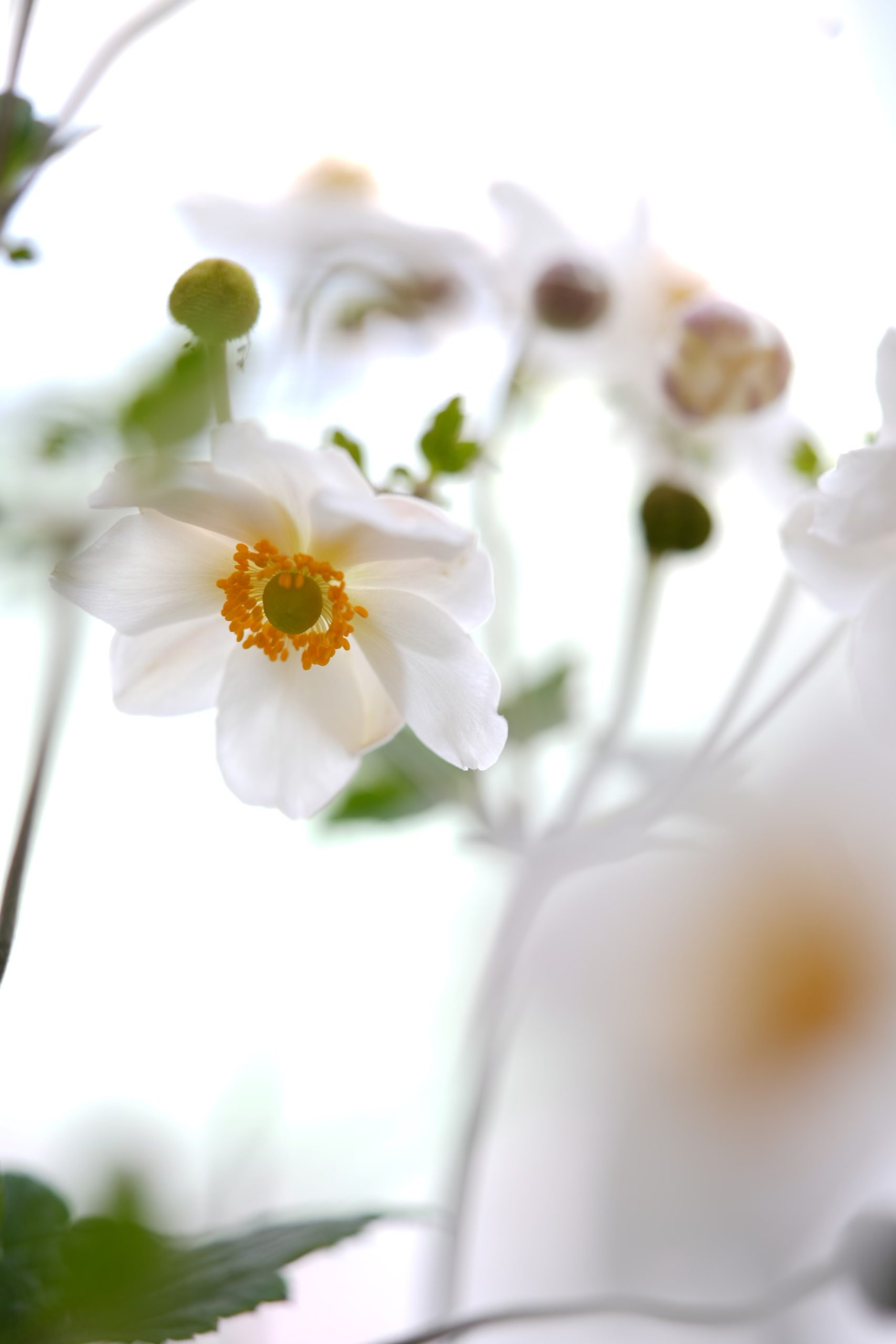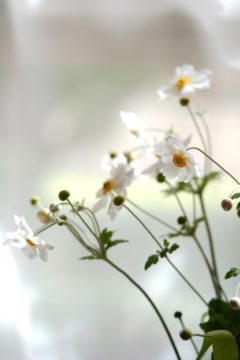Blog
Japanese Anemone: What You Need To Know

The Japanese anemone, also known as Anemone hupehensis, is a beautiful and versatile flower with a rich cultural history and a range of meanings. A member of the buttercup family, this flower is well known for its delicate appearance, stunning colours and long blooming period. But these aren’t the only features that make the Japanese anemone a popular choice in floristry and home gardens. Japanese anemone is also:
- Known as the “fall-blooming anemone” as it typically blooms from late summer to autumn
- Not related to the true anemones but are named after them due to their similar appearance
- A hardy perennial that can grow up to 3 feet tall and spread up to 2 feet wide
- Known to attract pollinators such as bees and butterflies, making it a valuable addition to any garden
Physical features aside, there is more to the Japanese anemone than meets the eye.
History
The Japanese anemone has a rich cultural history, particularly in East Asian countries such as Japan and China. The flower is believed to have originated in China, where it was cultivated as a medicinal plant. Its roots were used to treat various ailments such as respiratory problems, menstrual cramps and rheumatism.
In Japan, the Japanese anemone is known as “wind flower” or “thunder flower” and is regarded as a symbol of good luck and protection against evil spirits. It is also believed to bring good fortune and prosperity to those who cultivate it.
Symbolism
The Japanese anemone has several meanings, including protection against evil, luck and love. In the language of flowers, the Japanese anemone symbolises anticipation, fragility and emotional attachment.
The Japanese anemone has also been a popular subject in art throughout history, particularly in Japanese and Chinese paintings. The flower is often depicted in delicate brushstrokes, and its symbolism varies depending on the context of the artwork. In some cases, the anemone may represent the transience of life or the impermanence of beauty, always drawing us back to the present moment.
In floristry
The Japanese anemone is a popular choice for the cut flower industry due to its ethereal features and range of colours, in shades of pink, white and deep red.
The Japanese anemone is primarily grown as an ornamental plant for its beautiful flowers, commonly used in the cut flower industry. The flower’s delicate appearance and long blooming period make it a popular choice for arrangements that require that effortless look. This delicate bloom can be a beautiful substitute for cosmos.
Japanese anemones flower between late summer to autumn, so keep an eye out for them at your local flower markets – they make a perfect addition to autumnal bouquets!
